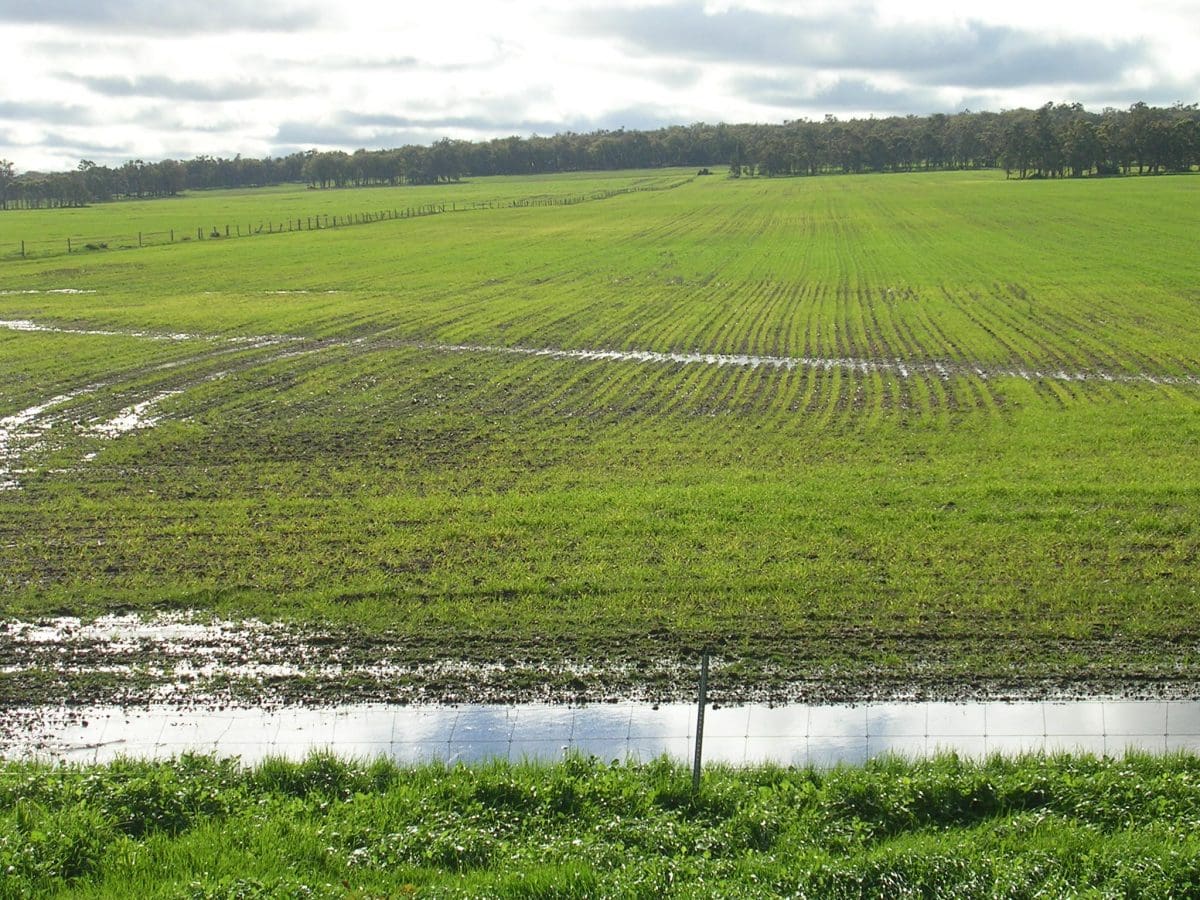
(Photo: DPIRD)
A WETTER-THAN-AVERAGE start to the winter cropping season could become a double-edged sword for grain growers in Western Australia with experts warning of an increased disease risk this year, particularly if wet conditions continue.
Recent rainfall patterns and mild temperatures have proved ideal conditions for the development of root and foliar diseases increasing the need for growers to have a strategic and disciplined approach to disease management.
Grains Research and Development Corporation (GRDC) crop protection manager – west, Georgia Megirian said significant research and development investments had been made to help growers identify and understand disease symptoms and guide their management decisions on-farm.
She said high on the watchlist for WA this season were Sclerotinia in canola and lupins, and net blotches in barley.
“Seasonal conditions, along with changes to agronomic practices such as stubble retention and minimum tillage have increased the disease burden, making disease management an increasingly important consideration for growers,” Ms Megirian said.
“Current conditions are looking particularly conducive to disease development so early and ongoing crop monitoring for symptoms will be critical, as the key to effective fungicide application is timing.”
Decision support tool
WA Department of Primary Industries and Regional Development (DPIRD) senior research scientist Jean Galloway is encouraging growers to use the SclerotinaCM decision support tool to determine the cost effectiveness of applying fungicides to control Sclerotinia stem rot (SSR).
She said apothecia has been observed in all port zones and disease has been found on early sown canola in the Geraldton and Esperance regions.
“Fungicide sprays need to be applied before SSR disease symptoms are observed in the crop. The SclerotinaCM tool allows growers and their advisers to make early and cost-effective decisions about fungicide programs,” Ms Galloway said.
“Resistance in Sclerotinia to certain fungicide actives has already been reported overseas, so to reduce the risk growers need to use best practice and rotate fungicides.
“They also need to adhere to the maximum number of times any one group of fungicides can be applied to a canola crop a season to maintain the efficacy of these actives. This will help to minimise the risks of fungicide resistance evolving.”
Ms Galloway said it was important canola growers understood the optimum timing for applying fungicides to control Sclerotinia was between 20 per cent and 50 per cent bloom.
The SclerotinaCM tool has a handy video which can be used to help identify the bloom stage of canola crops.
Ms Galloway said this would ensure the most effective and cost-efficient control and assist in retaining fungicides as a critical management tool.
GRDC has invested significantly to understand Sclerotinia in canola and research is now starting to investigate the disease’s impact in narrow-leaf lupin.
Ms Megirian said the new research being undertaken in partnership with DPIRD aimed to provide growers and advisers with data about the impact of Sclerotinia in lupin crops, including regionally relevant economic thresholds.
GRDC is also investing in new research into Spot form net blotch (SFNB) of barley in low rainfall areas designed to equip growers and advisers with information on how different agronomic options have the potential to provide some disease control and/or to allow reduced fungicide use.
Monitor crops
DPIRD research scientist Andrea Hills, who manages the SFNB project is also encouraging growers to monitor crops for net blotches this season.
She said the potential yield loss to disease was greater in higher rainfall years, so economic responses to fungicide application were also more likely.
“In WA there has been reduced sensitivity and resistance to some group three (DMI) fungicides in net and spot form net blotch and also group seven (SDHI) fungicides in spot form net blotch populations so following fungicide resistance guidelines will be particularly important in barley this year,” Dr Hills said.
GRDC also supports growers taking steps to reduce the risk of resistance developing and as part of this has invested in the Australian Fungicide Resistance Extension Network (AFREN).
“The grains industry is increasing reliant on fungicides to control disease levels and protect crop yields, so an integrated approach to disease management on-farm is critical,” Ms Megirian said.
“Being aware and consciously using multiple management approaches is the only way growers can reduce the risk of resistance and ensure fungicides are retained as vital tools for disease management on-farm.”
Source: GRDC

HAVE YOUR SAY